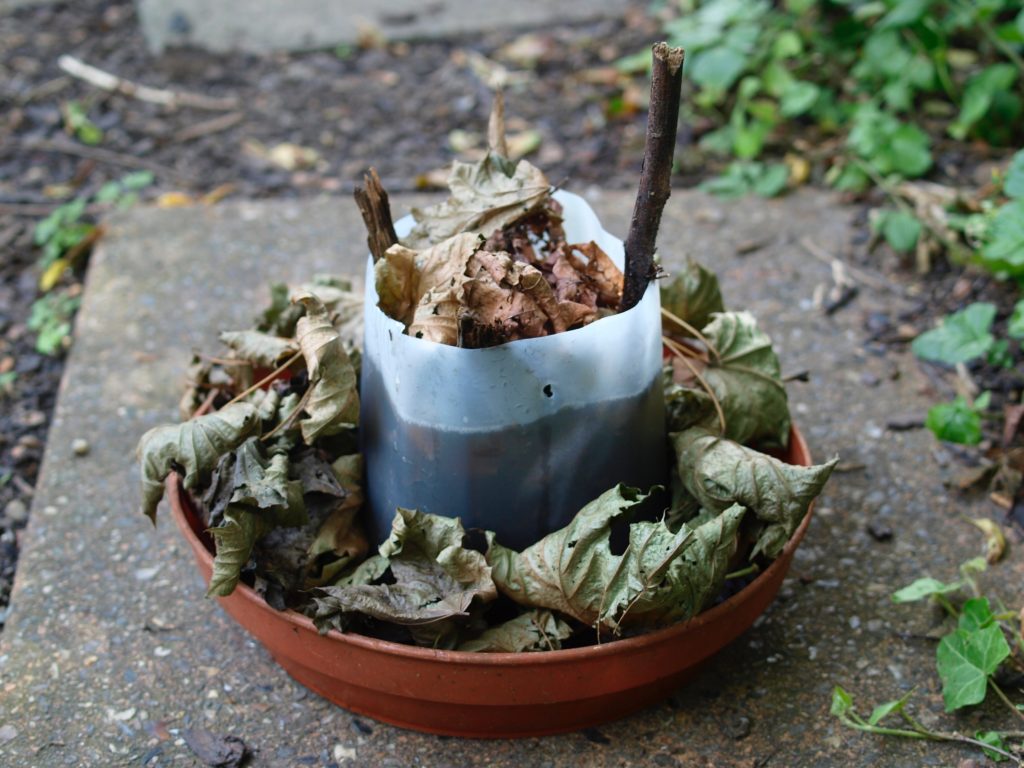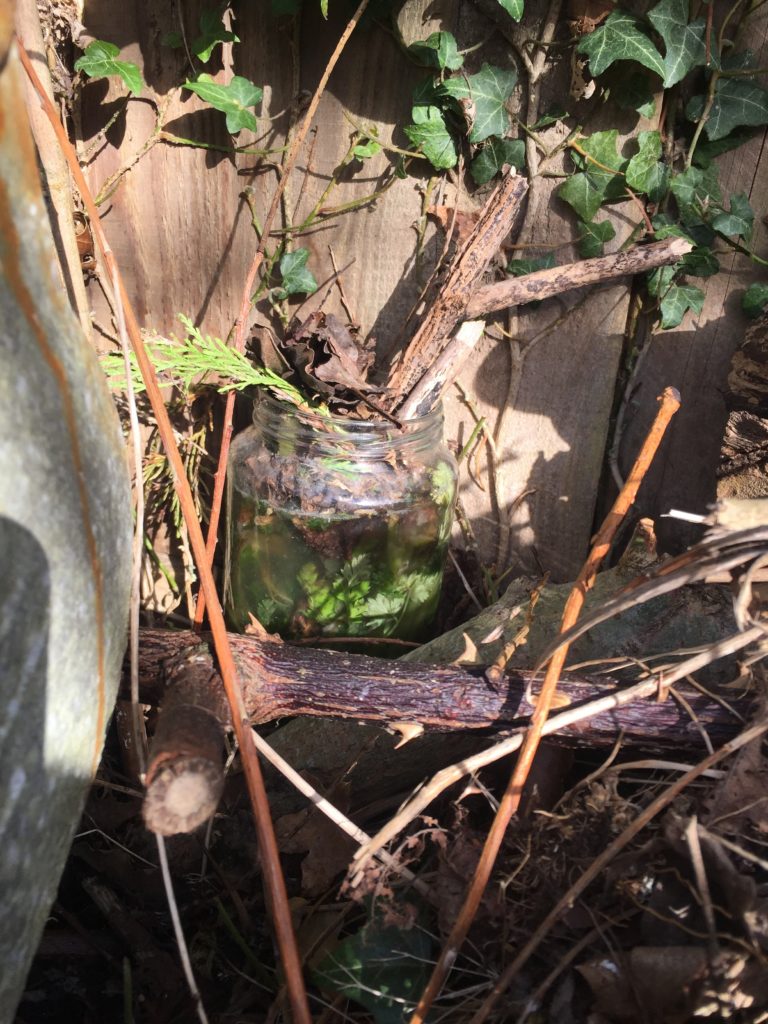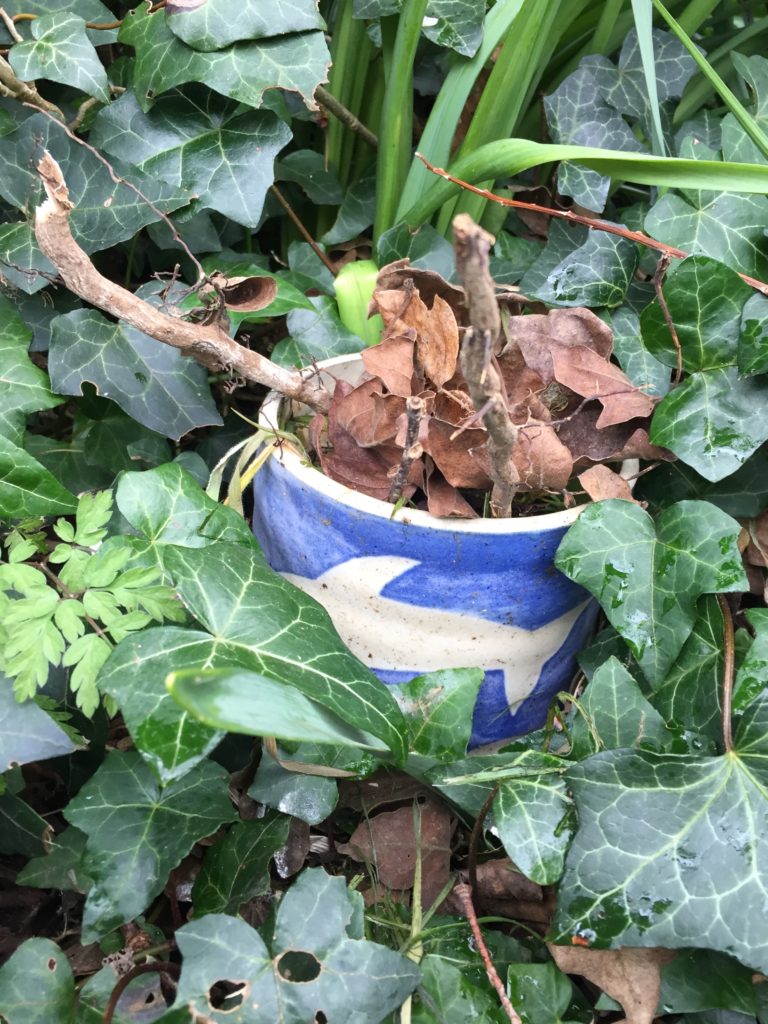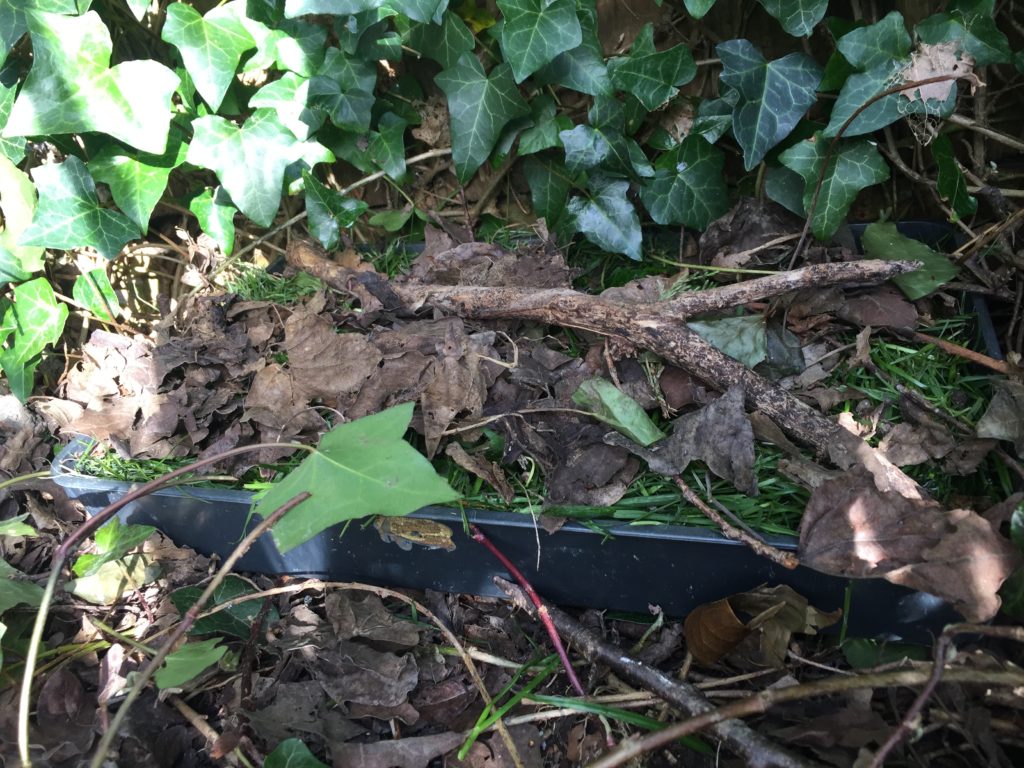
Since the project began in 2016 we have asked volunteers to use single-use plastic milk bottles to create their Hoverfly Lagoon, while at the same time encouraging the use of an alternative container of similar size and shape.
This is because we need:
- something free and available to most people
- something that is safe to use
- to standardise the size
This year (2021) we would like to ask our volunteers to first ensure they replace and recycle their containers every month until the end of the project (to reduce the chances of chemicals leaching from the bottle into the environment as they break down), and second to test an alternative container for a Hoverfly Lagoon (see the Buzz Club project page for our 2021 methods PDF).
Below are some of our alternative ideas for a Lagoon container, with pros and cons to consider. We would love to hear from you about these and your own ideas. Do contact us via our email address or on twitter via @HoverflyLagoons.
The Glass Jar Lagoon

Glass works very well as a Lagoon container, it won’t degrade or leach chemicals and you can observe larvae and other lagoon-dwelling animals very easily without disturbing them, see the 2020 Lagoons blog and this post on their breathing tubes.
However, glass can break and even smash which is a hazard particularly with children. It is also not possible to pierce overflow holes in glass Lagoons, so they may need to be monitored – overflow holes reduce the chances that heavy rain causes the water to flow over the edge of the Lagoon container taking with it hoverfly eggs or larvae.
The Stainless Steel Cooking Pot Lagoon

We think this could be an alternative, inert container for a Hoverfly Lagoon, however we have no evidence yet that this type of Lagoon will attract hoverflies or be suitable for their development to adults.
Similar to a glass Lagoon, it may not be possible to pierce overflow holes. A steel Lagoon may also get too hot, particularly if exposed, so if you’re thinking of using a steel container do ensure it is under cover, that is in the shade such as under a bush or trees.
The Durable Plastic Pot Lagoon

We have used durable plastic containers since 2016 and they continue to work well to attract and support the full life cycle of the hoverfly. Overflow holes can be drilled in the sides, and they show no indication of degrading in 4+ years of use.
However, if you are thinking of using a plastic pot do consider what the pot is made of and how it has been coloured as some dyes are not water proof. These containers are still made of plastic, and may not be chemically inert particularly if exposed to heat so keeping them shaded, under bushes or trees is advised.
For more information on plastics see for e.g. The Micro Gardener or Garden Organic – please note this is for information only, the Buzz Club does not necessarily support or endorse these websites or companies.
The Glazed Ceramic Pot Lagoon

These could be effective Hoverfly Lagoons though we have not yet tested them.
Similar to glass and steel, creating overflow holes in these is not possible, so some monitoring may be required. They are also prone to breaking or smashing, so could be a hazard for children.
The Durable Plastic Seed Tray Lagoon

Seed trays have been effective Hoverfly Lagoons, attracting many species including particularly Helophilus pendulus but also Eristalis spp.
However, this Lagoon is obviously shaped very differently to our standard container and the other alternatives posted here. They may attract a different range of hoverfly species than the deeper Lagoons. They may also evaporate quickly, particularly during the warmer summer months, so do require covering with dry leaf litter, and may need monitoring and maintaining shade.
Depending on the type of seed tray, these are also plastic and may eventually break down or crack.
Another idea?
The silicone Lagoon?
The resin Lagoon?
The rubber Lagoon?
The wooden bird box Lagoon, sealed with beeswax?
